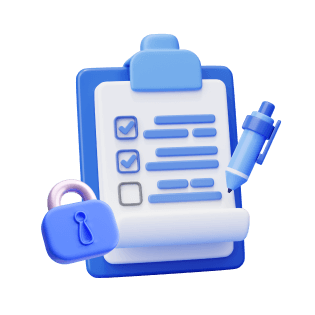
Looking for a mortgage?
Professionals here, 20 years doing this
Investing With Landlord Mortgage Loan Program
Investing in real estate in California offers immense potential, especially for landlords. The state’s dynamic housing market continues to draw investors seeking steady income and long-term growth. However, securing the right mortgage is crucial for maximizing these benefits.
We will guide you through the essentials of landlord mortgages in California. Understanding the specific mortgage options available to landlords is key to making informed decisions. We will cover different types of mortgages, the qualification criteria, and California-specific regulations that could impact your investment.

Buy or refinance a property with or without showing your tax returns
Understanding Landlord Mortgages
Landlord mortgages differ from traditional residential mortgages in several key ways. While a typical mortgage is designed for owner-occupied properties, a landlord mortgage is specifically tailored for those buying property to rent out. These mortgages take into account the unique risks and financial structures associated with rental properties.
Types of Landlord Mortgages
- Fixed-Rate Mortgages:
Fixed-rate mortgages offer stability with a consistent interest rate throughout the loan term. This type is ideal for landlords who prefer predictable payments and want to hedge against future interest rate hikes. You’ll know exactly how much you need to pay each month, making budgeting easier.
- Adjustable-Rate Mortgages (ARMs):
Adjustable-rate mortgages typically start with a lower interest rate than fixed-rate loans. However, the rate can change over time, often after an initial fixed period. For landlords, this option might be appealing if you expect to sell the property or refinance before the rate adjusts. ARMs can be risky if rates rise significantly.
- Interest-Only Mortgages:
With interest-only mortgages, you pay only the interest on the loan for a set period, usually five to ten years. After this period, you begin paying both principal and interest. This type of mortgage can free up cash flow in the early years of property ownership, which might be useful for renovations or other investments. However, it also means higher payments down the line.
- Buy-to-Let Mortgages:
Buy-to-let mortgages are designed specifically for rental properties. Lenders consider the potential rental income to determine how much you can borrow. These mortgages often require a larger down payment and come with higher interest rates compared to residential mortgages, reflecting the perceived higher risk.
Pros and Cons
Each mortgage type comes with its own set of advantages and disadvantages. Fixed-rate mortgages provide stability but may have higher initial rates compared to ARMs. Adjustable-rate mortgages offer lower starting rates but carry the risk of future rate increases. Interest-only mortgages can improve cash flow in the short term but lead to higher payments later. Buy-to-let mortgages cater directly to landlords but often come with stricter lending criteria.
Choosing the right mortgage depends on your financial situation, investment goals, and risk tolerance. It’s crucial to evaluate your options carefully to ensure that your mortgage aligns with your long-term plans as a landlord in California.
Qualification Requirements for Landlord Mortgages in California
Securing a landlord mortgage in California involves meeting specific qualification criteria. Lenders assess several factors to determine your eligibility and the terms of the mortgage. Understanding these requirements will help you prepare and increase your chances of approval.
Credit Score
Your credit score plays a significant role in obtaining a landlord mortgage. Lenders typically require a higher credit score for rental properties than for owner-occupied homes. A score of 680 or higher is often the minimum, though a score above 700 will give you access to better interest rates and loan terms. Maintaining a good credit history by paying bills on time and keeping credit card balances low will boost your chances of qualifying for a favorable mortgage.
Income Requirements
Lenders closely scrutinize your income to ensure you can handle the mortgage payments. Unlike residential mortgages, where only your personal income is considered, landlord mortgages may also factor in potential rental income. However, this rental income is usually discounted, with lenders considering only 70-75% of the expected rent to account for vacancies and maintenance costs. You’ll need to provide thorough documentation, including tax returns, W-2s, or 1099s, and, if applicable, rental income projections verified by a property appraiser.
Down Payment
Expect to make a larger down payment on a landlord mortgage than you would on a traditional home loan. In California, down payments for rental properties typically range from 20% to 30% of the property’s purchase price. A higher down payment reduces the lender’s risk and can also lower your interest rate. It’s essential to save diligently for this requirement, as a larger down payment can significantly impact your overall investment returns.
Debt-to-Income Ratio (DTI)
The debt-to-income ratio (DTI) is another critical factor lenders consider. Your DTI is the percentage of your monthly income that goes toward debt payments, including your mortgage. For landlord mortgages, lenders generally prefer a DTI of 43% or lower, though some may allow up to 50% if you have strong compensating factors, such as a high credit score or substantial cash reserves. To improve your DTI, consider paying down existing debts before applying for a mortgage.
Property Appraisal
A property appraisal is required for all landlord mortgages. The appraisal determines the property’s value and ensures it’s worth the loan amount. Lenders want to ensure that the property can generate enough rental income to cover the mortgage payments. The appraiser will evaluate the property's condition, location, and potential for rental income. It’s crucial to choose properties that are likely to appraise well and meet the lender’s requirements.
State-Specific Regulations
California’s real estate market comes with unique regulations that landlords must navigate when securing a mortgage. Understanding these state-specific laws is crucial for ensuring compliance and protecting your investment.
Rent Control Laws
California has some of the most stringent rent control laws in the country. The California Tenant Protection Act of 2019, also known as AB 1482, limits how much you can increase rent annually for certain properties. As a landlord, you must be aware of these regulations, as they can affect your rental income projections and, consequently, your ability to qualify for a mortgage. Ensure that the property you plan to buy is compliant with local rent control ordinances, especially in cities like Los Angeles and San Francisco, which have additional restrictions.
Tenant Rights
California’s tenant protection laws are extensive. For instance, landlords must provide a “just cause” for evicting tenants after they have lived in the property for more than a year. Additionally, there are strict regulations on security deposits, maintenance responsibilities, and the handling of rental payments. These laws can impact your operational costs and should be factored into your financial planning when applying for a mortgage. Non-compliance can lead to legal challenges, which might affect your ability to maintain steady rental income.
Property Zoning and Regulations
Before purchasing a rental property, verify that it complies with local zoning laws. California has strict zoning regulations that dictate how land and properties can be used. Some areas may have restrictions on short-term rentals or require specific permits for certain types of housing. Failing to adhere to zoning laws can result in fines or legal action, which could jeopardize your mortgage and investment.
Tips for Securing the Best Mortgage
To secure the most favorable mortgage terms as a landlord in California, consider the following strategies:
1. Improve Your Credit Score
A higher credit score can significantly reduce your interest rate. Focus on paying off existing debts, avoiding new credit inquiries, and correcting any errors on your credit report. Lenders view higher credit scores as an indication of lower risk, which can translate into better loan terms.
2. Save for a Larger Down Payment
Increasing your down payment reduces the lender’s risk, which can lead to lower interest rates and better loan terms. Aim for at least 20-30% of the property’s purchase price. A larger down payment also reduces your monthly mortgage payments, improving your cash flow.
3. Shop Around for Lenders
Don’t settle for the first mortgage offer you receive. Different lenders have different criteria and rates. Take the time to compare offers from multiple lenders, including both traditional banks and specialized mortgage companies. Consider working with a mortgage broker who can help you navigate the options and find the best fit for your needs.
4. Consider Pre-Approval
Getting pre-approved for a mortgage shows sellers that you’re a serious buyer and gives you a clear understanding of how much you can borrow. This step can also speed up the mortgage process once you’ve found a property.
5. Leverage Rental Income
If the property you’re purchasing has existing tenants, use this rental income to strengthen your mortgage application. Lenders may consider this income when assessing your ability to make mortgage payments. Ensure that the rental income is well-documented and supported by lease agreements and property management records.